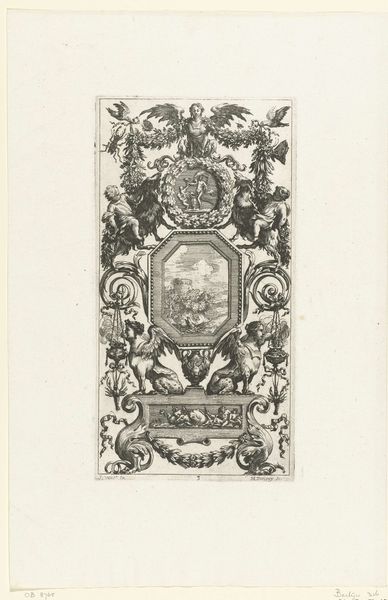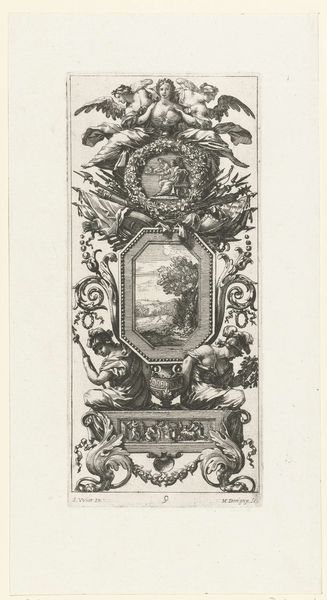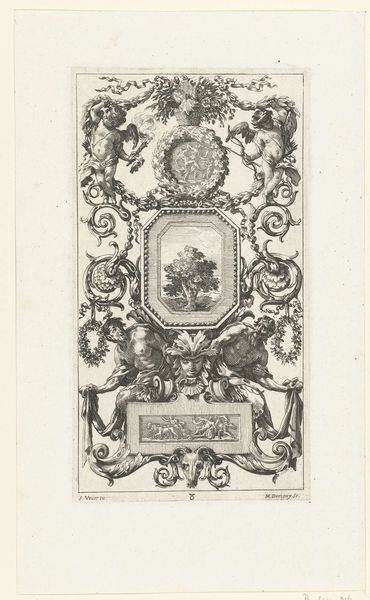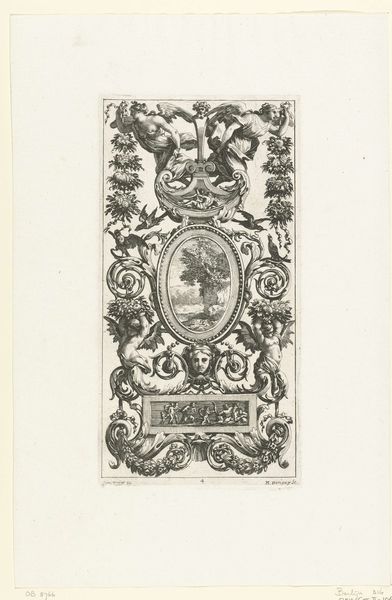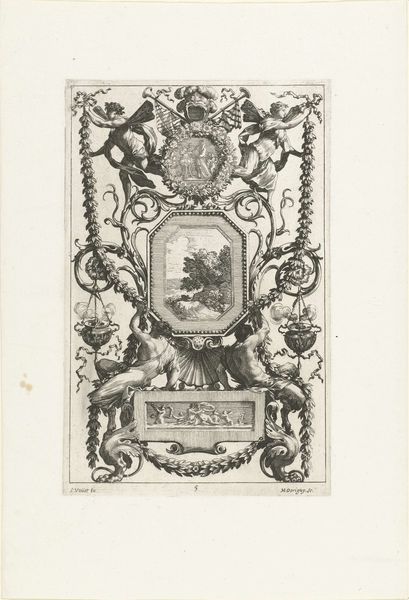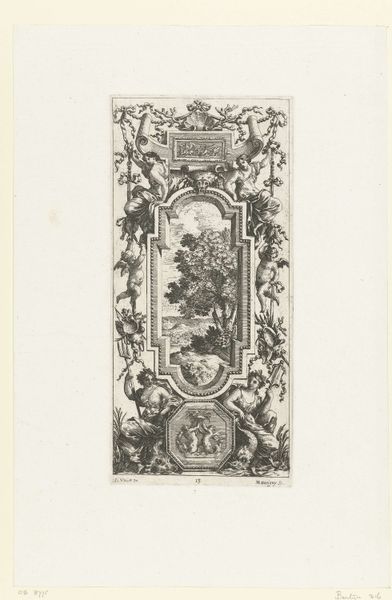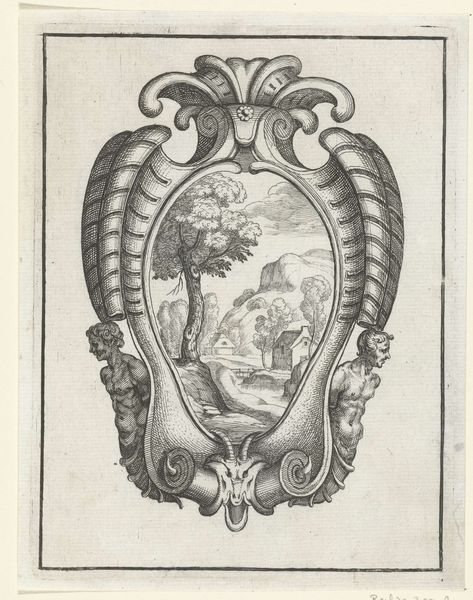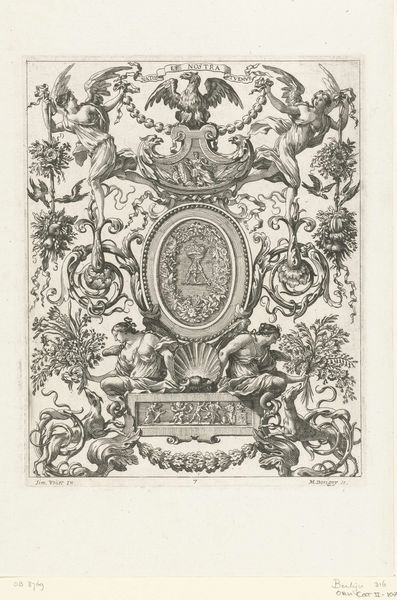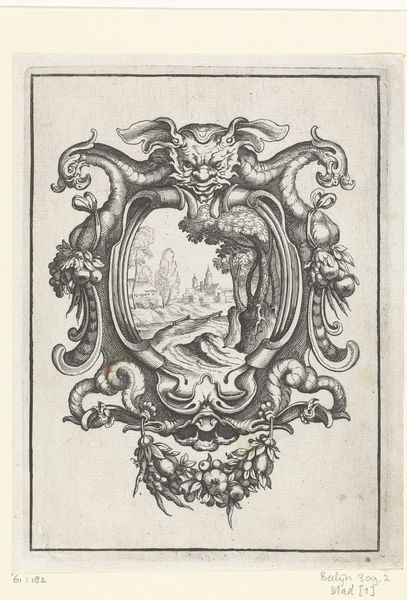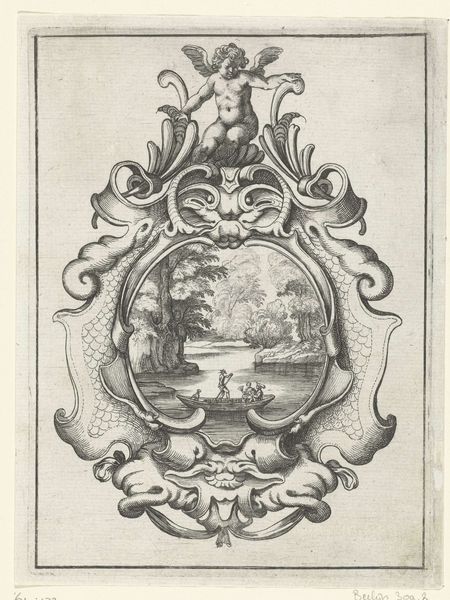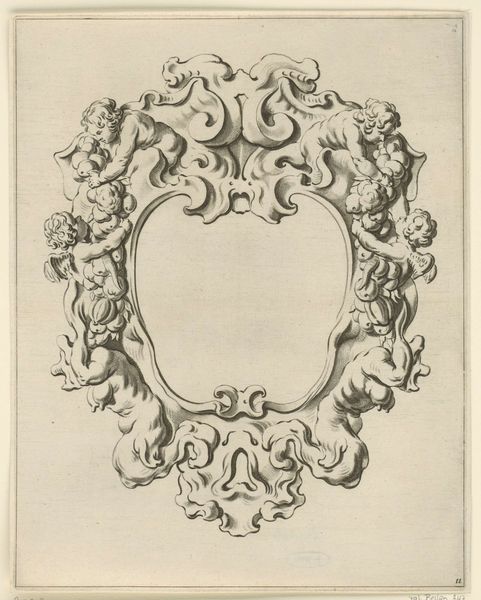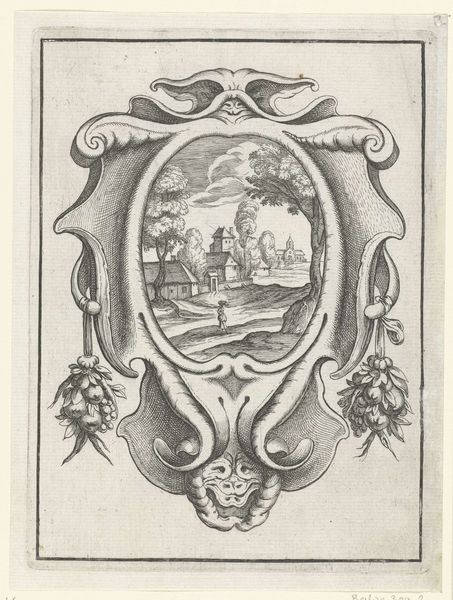
engraving
#
baroque
#
pen drawing
#
mechanical pen drawing
#
pen illustration
#
pen sketch
#
old engraving style
#
landscape
#
figuration
#
ink line art
#
personal sketchbook
#
pen-ink sketch
#
line
#
pen work
#
sketchbook drawing
#
history-painting
#
engraving
Dimensions: height 244 mm, width 102 mm
Copyright: Rijks Museum: Open Domain
Editor: This is a wall panel design with two putti under an octagonal frame, dating back to 1647, created by Michel Dorigny. The engraving’s level of detail and intricate ornamental elements immediately struck me. It seems so precisely planned and carefully constructed. How would you interpret this work within its historical context? Curator: Looking at it through the lens of social and cultural history, we can see how it reflects the Baroque era’s emphasis on grandeur and elaborate ornamentation. The putti, the complex swirling forms, the sheer density of visual information—these elements speak to a desire for imposing artistic statements. How might this aesthetic relate to the political landscape of the time? Editor: Perhaps as a symbol of power and stability? These ornate designs seem to affirm control. But were pieces like this accessible to everyone? Curator: That's precisely the critical question. Engravings, although more accessible than original paintings, still catered largely to elite audiences—the aristocracy and wealthy merchants. They offered a way to disseminate images, but also to solidify and propagate a specific aesthetic taste connected to social status. Do you notice anything about how the composition might reinforce this idea? Editor: Well, there's a clear hierarchy of imagery, from the classical scene at the top to the landscape in the center. Everything feels so meticulously ordered. This suggests a very controlled view of the world. Curator: Exactly. The order isn't just decorative; it communicates a specific worldview. It reflects an age when institutions like the monarchy and the Church sought to impose their order upon society and culture. Thinking about the museum context today, do you think displaying engravings like this alters its historical meaning? Editor: That's a good point. Placed within a museum setting, we might analyze this engraving from many different angles rather than simply admiring its artistic skills or enjoying its overt aesthetic. This gives it new life and appreciation, but also different, nuanced political considerations, perhaps. Curator: Precisely. Reflecting on it this way helps us see beyond mere aesthetics to how power operates within the history of imagery. It’s a reminder that even seemingly innocent designs can carry significant social and political weight.
Comments
No comments
Be the first to comment and join the conversation on the ultimate creative platform.

